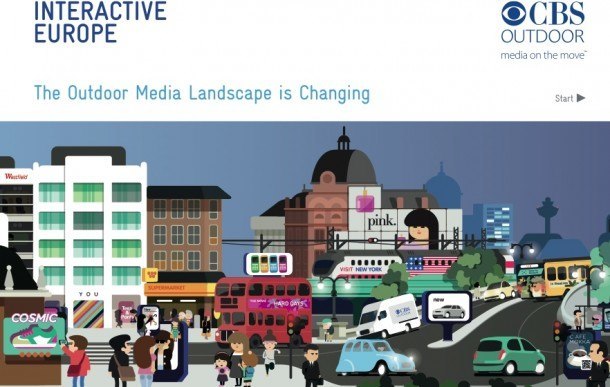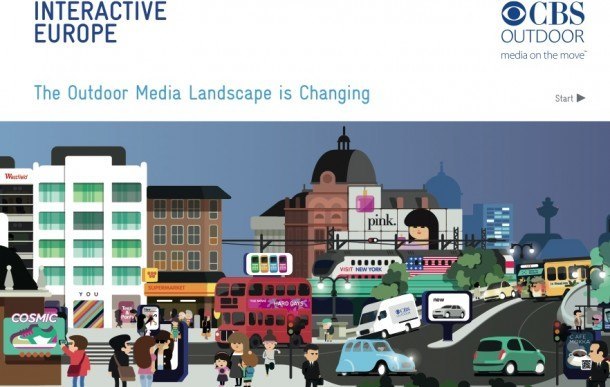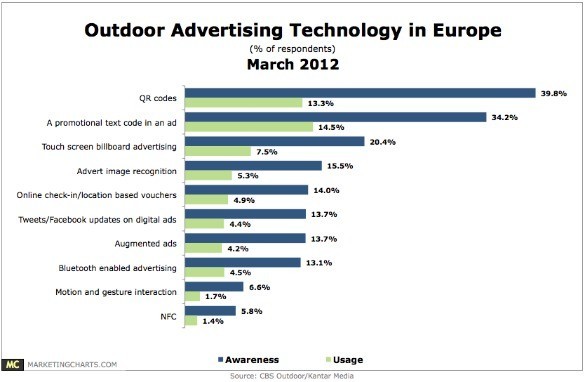
Research: CBS Outdoor Finds Interactive OOH Little Known Or Used in Europe
March 26, 2012 by Dave Haynes
CBS Outdoor has released a March 2012 study, done by Kantar Media, looking at the use and understanding of interactive technologies for out of home in Europe, and the results suggest the technology is still very much in its early adopter years.
The study, done last fall in six countries and involving more than 9,000 respondents, suggests QR codes and text messaging campaigns had the highest level of awareness, at 39.8% and 34.2%, but actual usage was less than 15 percent with each. Less than six percent of those asked knew what NFC (near-field communicate) was about and just 1.4% had ever used the technology.
The report also found things like social streams in ads (i.e. Tweets), check-ins, augmented reality and Bluetooth proximity marketing also had awareness levels lower than 15 percent, and user rates less than five percent.
However, MarketingCharts relays, despite low rates of awareness and usage among European adults, smartphone and tablet owners remain generally upbeat about interacting with out-of-home advertising, with 71% saying they would feel more positive about a brand that invites interaction. Breaking down the data by age demographic, 25-34-year-olds are most likely to consider interacting with an outdoor ad (74%), followed closely by 18-24-year-olds (72%) and the 35-44 set (70%). Those aged 45-55 are the least likely to consider doing so, at 65%.
Among early adopters (people who agree with the statement “I like to buy gadgets as soon as they come out”), 84% would consider interacting with an out-of-home ad.
Data from “Interactive Europe” indicates that roughly three-quarters of smartphone and tablet owners have taken an action in direct response to an out-of-home advertising campaign, while response rates among technology advocates (those who agree with the statement “I like telling other people about new technologies”) are even higher, at 83%.
The most popular action taken by technology advocates and device owners using their device was going online to get more information (39% and 32%, respectively). About one-third of the technology advocates considered buying the product, as did 28% of the device owners, while 23% of the former and 20% of the latter actually bought a product in response to an outdoor ad.
The survey was done in: Italy, France, Spain, Netherlands, UK, and Ireland. My guess, and only guess, its the results would be similar in North America.





Not an unexpected or wholly surprising outcome to the research. In the specific case of NFC most mobile phone suppliers when asked have never heard of it either. In 12-18 months time this will change. Nonetheless, having spent nearly 15 years of loose involvement with the conception, design and delivery of innovative interactive media for the OOH bods I’d suggest the commisioning of a study that may be of comparable interest; namely what corrolation exists between the deployment of an interactive campaign and the free PR that is generated for the brand and the OOH company in the commercial and public media. (This can be expressed in terms of column inches). Often the ability to win business is less about being innovative as being perceived to be innovative.